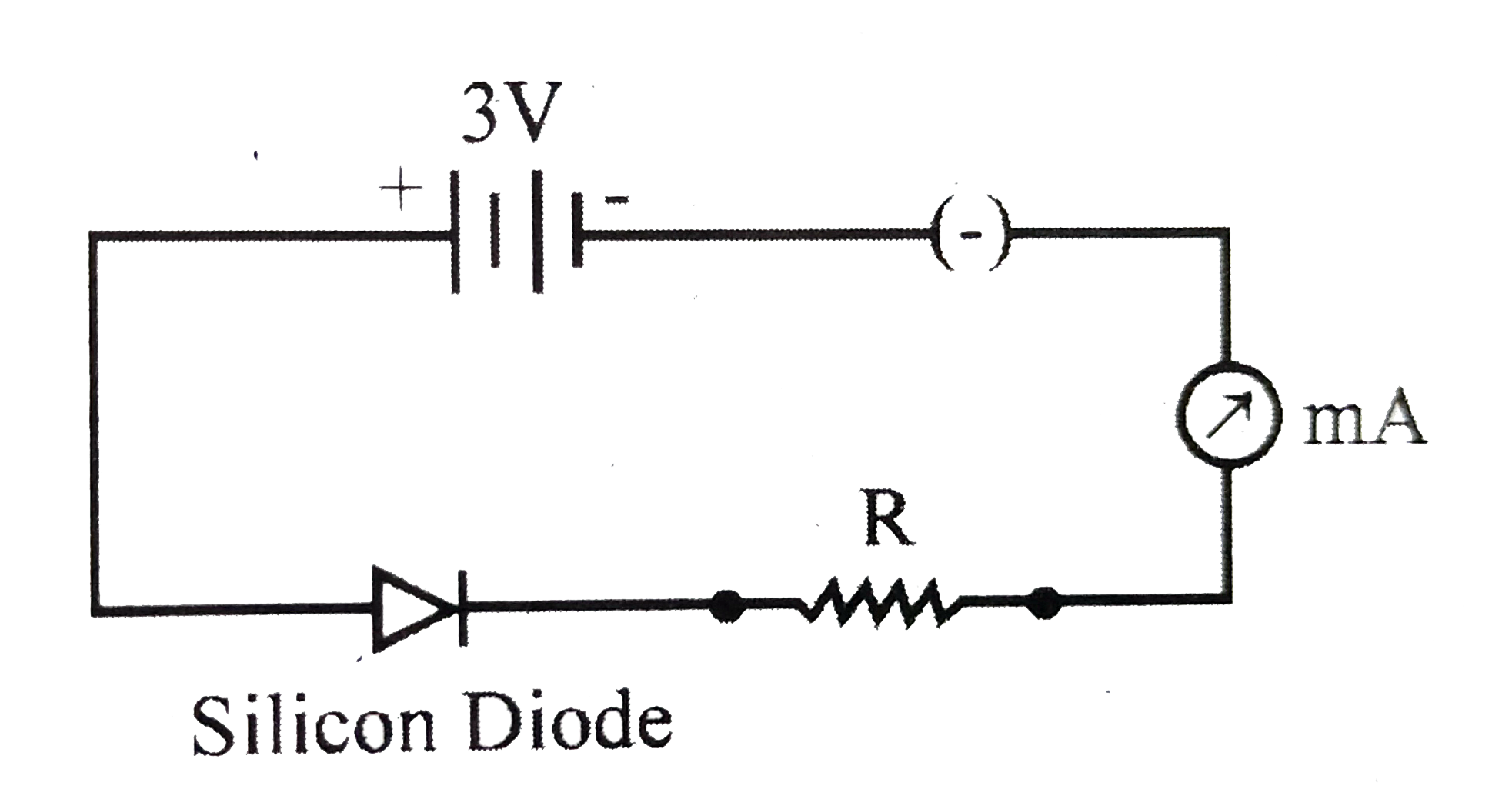An alternating voltage is connected in series with a resistance R and inductance L if the potential drop across the resistance is 200V and across the inductance is 150V, then the applied voltage is
350V
250V
500V
300V
The correct Answer is:B
To find the applied voltage in a series circuit with resistance R and inductance L, where the potential drop across the resistance is VR=200V and across the inductance is VL=150V, we can follow these steps:
1. Understand the Circuit Configuration:
The circuit consists of a resistor R and an inductor L connected in series with an alternating voltage source. In a series circuit, the same current flows through both components.
2. Identify Voltage Drops:
The voltage drop across the resistor R is given as VR=200V and the voltage drop across the inductor L is VL=150V.
3. Use Phasor Representation:
In AC circuits, the voltage across the resistor VR and the voltage across the inductor VL can be represented as phasors. The voltage across the resistor is in phase with the current, while the voltage across the inductor lags the current by 90∘.
4. Apply the Pythagorean Theorem:
Since the voltage drops are perpendicular to each other (due to the phase difference), the total applied voltage V can be calculated using the Pythagorean theorem:
V=√V2R+V2L
5. Substitute the Values:
Plugging in the values:
V=√(200)2+(150)2
V=√40000+22500
V=√62500
6. Calculate the Result:
Now, calculating the square root:
V=250V
7. Conclusion:
The applied voltage across the RL circuit is 250V.
Final Answer:
The applied voltage is 250V.
---
The circuit consists of a resistor R and an inductor L connected in series with an alternating voltage source. In a series circuit, the same current flows through both components.
The voltage drop across the resistor R is given as VR=200V and the voltage drop across the inductor L is VL=150V.
In AC circuits, the voltage across the resistor VR and the voltage across the inductor VL can be represented as phasors. The voltage across the resistor is in phase with the current, while the voltage across the inductor lags the current by 90∘.
Since the voltage drops are perpendicular to each other (due to the phase difference), the total applied voltage V can be calculated using the Pythagorean theorem:
V=√V2R+V2L
Plugging in the values:
V=√(200)2+(150)2
V=√40000+22500
V=√62500
Now, calculating the square root:
V=250V
The applied voltage across the RL circuit is 250V.
The applied voltage is 250V.
Topper's Solved these Questions
- BOOK - A2ZCHAPTER - ALTERNATING CURRENTEXERCISE - Power In Ac Circuits21videos
ALTERNATING CURRENT
- BOOK - A2ZCHAPTER - ALTERNATING CURRENTEXERCISE - Problems Based On Mixed Concepts40videos
ALTERNATING CURRENT
- BOOK - A2ZCHAPTER - ALTERNATING CURRENTEXERCISE - Connected With Ac42videos
ALTERNATING CURRENT
- BOOK - A2ZCHAPTER - ATOMIC PHYSICSEXERCISE - Section D - Chapter End Test30videos
ATOMIC PHYSICS
Similar Questions
Knowledge Check
- Question 1 - Select One
A 100Ω resistance is connected in series with a 4H inductor. The voltage across the resistor is VR=2sin(1000t)V. The voltage across the inductors is
A80sin(1000t+π2)B40sin(1000t+π2)C80sin(1000t−π2)D40sin(1000π−π2) - Question 2 - Select One
Assertion: An inductance and a resistance are connected in series with an AC circuit. In this circuit the current and the potential difference across the resistance lag behind potential difference across the inductance by an angle π/2.
Reason: In LR circuit voltage leads the current by phase angle which depends on the value of inductance and resistance both.AIf both the assertion and reason are true and reason is a true explantion of the assertion.BIf both the assertion and reason are true but the reason is not true the correct explantion of the assertion.CIf the assertion is true but reason falseDIf both the assertion and reason are false. - Question 3 - Select One
In series LCR circuit voltage drop across resistance is 8V, across inductor is 6V and across capacitor is 12V. Then
Avoltage of the source will be leading current in the circuitBvoltage drop across each element will be less than the applied voltage.Cpower factor of circuit will be 4/3Dnone of these.
If a galvanometer is connected in series with a high resistance so that potential drop across the galvanometer is 1/n th of the total applied voltage, then show that the combined resistance of the galvanometer and the series resistor is n times the resistance of the galvanometer i.e.,
View SolutionA coil of negligible resistance is connected inseries with 90Ω resistor acorss a 120 V -60 Hz line. A voltmeter reads 36 V across the resistance. Find voltage across the coil and inductance of the coil.
View SolutionA coil of negligible resistance is connected inseries with 90Ω resistor acorss a 120 V -60 Hz line. A voltmeter reads 36 V across the resistance. Find voltage across the coil and inductance of the coil.
View SolutionAn alternating e.m.f. of 100V (rms) is applied to a series LCR circuit. At resonance, the potential difference across the inductance and across the capacitance is 400V each. The potential difference across the resistance will be
View SolutionAn AC voltage is applied acrss a series combination of L and R. If the voltage drop across the resistor and inductor are 20V and 15V respectiely, then applied peak voltage is
View Solution


